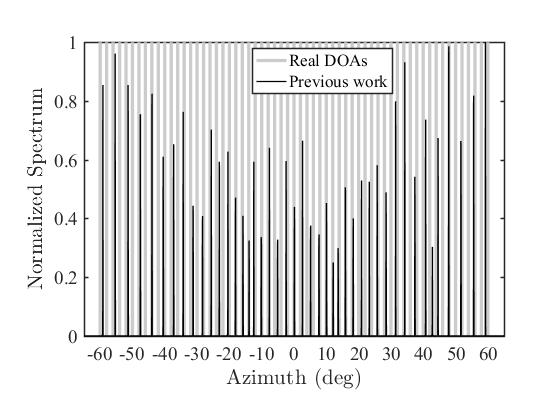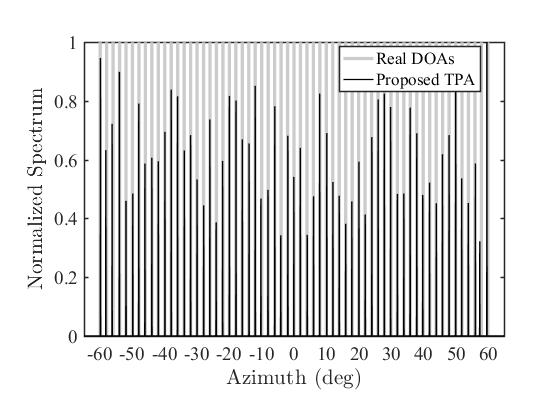
When we use antenna array to estimate the direction-of-arrival (DOA) of received signals, we want to attain as many degree-of-freedoms (DOFs) as possible. With a well-arranged antenna array and corresponding signal processing algorithm, the number of sources we can detect is more than the number of used antennas. In this work, we proposed a triply-primed array (TPA), which consists of three uniform linear arrays (ULAs), with \(N_1\), \(N_2\) and \(N_3\) sensors, respectively; where \(N_1\), \(N_2\) and \(N_3\) are mutually primed integers. The spacings in the first, second and third ULAs are \(N_2N_3d\), \(N_1N_3d\) and \(N_1N_2d\), respectively, and \(d\) is the unit spacing. Since entries of the covariance matrix had the phase delay proportional to the difference of spacings, by obtaining the fourth order difference covariance matrix, the origin holes in the physical array or the virtual array based on second-order difference were complemented. To completely take the advantage of the proposed TPA, we utilized compressed sensing (CS) approach to estimate the DOAs due to the fact that received signals had sparsity in the angular domain.
The contribution of this work comes in two aspects:
- Our proposed TPA can operate with \(O(N_1N_2N_3)\) DOFs to estimate the DOAs of multiple incident quasi-stationary signals
- The number of consecutive and unique delays in the fourth order difference covariance matrix is expressed in closed form


PUBLICATION:
K.-C. Hsu and J.-F. Kiang, ‘‘DOA Estimation Using Triply Primed Arrays Based on Fourth-Order Statistics,’’ Progress In Electromagnetics Research M (PIER M), vol. 67, pp. 55-64, Mar. 2018.
K.-C. Hsu and J.-F. Kiang, ‘‘DOA Estimation With Triply Primed Arrays Based on Fourth-Order Statistics,’’ IEEE International Symposium on Antennas Propagation and USNC/URSI National Radio Science Meeting, July 2018.